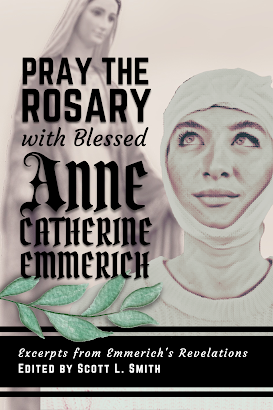Have you ever wondered why the heart shape doesn't really look like a real heart? If you slice a heart just right, maybe you get that typical heart shape. Still, that doesn't jive. Not exactly.
How did we go from heart to heart shape? What's the real story of the heart symbol?
And what's the connection between heart shapes, cupid's arrow, and St. Valentine's? That's a lot of symbolism without explanation. I'm not okay with that!
Unlike Cupid's arrow, Common explanations of this connection completely miss the mark.
TL;DR ... So, here's the skinny. The heart shape derives from ancient pharmacological contraceptives and abortifacients. Yikes. How's that for a "Happy St. Valentine's Day"?
The Evil Origins of the Heart Shape Symbol - Table of Contents
St. Paul's Epistle to the Galatians and Pharmakeia
You have probably heard St. Paul list out the sin of the flesh in his Epistle to the Galatians. This is at Galatians 5:19-24:
Now the works of the flesh are plain: immorality, impurity, licentiousness, idolatry, sorcery (Greek pharmakeia), enmity, strife, jealousy, anger, selfishness, dissension, party spirit, envy, drunkenness, carousing, and the like. I warn you, as I warned you before, that those who do such things shall not inherit the kingdom of God. But the fruit of the Spirit is love, joy, peace, patience, kindness, goodness, faithfulness, gentleness, self-control; against such there is no law. And those who belong to Christ Jesus have crucified the flesh with its passions and desires.
All these sins of the flesh are contrasted against the fruits of the Holy Spirit (love, joy, peace, etc.).
Let's zero in on the Greek word for sorcery: pharmakeia. Here is some etymology of pharmakeia from Strong's Greek lexicon:
- †φαρμακεία pharmakeía, far-mak-i'-ah; medication ("pharmacy"), i.e. (by extension) magic (literally or figuratively):—sorcery, witchcraft.
- the use or the administering of drugs
- poisoning
- sorcery, magical arts, often found in connection with idolatry and fostered by it
- metaphorically, the deceptions and seductions of idolatry
Pharmakeia is, of course, the origin for the words pharmacy, pharmacist, and even BIG pharma.
Quick NOTE: St. Paul lists "drunkeness" as a sin of the flesh, above. He does not say all drinking is sinful. Here's a cool article on the wine from the Wedding at Cana, and the meaning of "wine on the lees":
What is the Meaning of Pharmakeia in the Bible? The History of Contraceptives and Abortifacients
So, why are all these bad things associated with pharmakeia? Pharmacies and pharmacists aren't bad now. Why were they considered bad then?
That is to say, why did part of society see pharmakeia as a sinful and evil, like St. Paul, and other parts of society associate pharmakeia with romantic love and heart shapes? That's quite a contrast!
What's the source of this conflict? Specifically, what's the moral conflict? (Spoiler: Modern society has no new and innovative moral evils. We just keep repeating the same things)
Here's the skinny ...
Pharmakeia was frequently associated with drugs of an illicit nature, like contraceptives, abortifacients, and other kinds of poisons (and maybe a love potion or two). These drugs would also be blessed or cursed, according to their purpose, by whatever priestess or witch doctor was available, for good measure.
That's why pharmakeia can be translated as "sorcery" -- herbal poisons and potions were often associated with withcraft.
Revelation 18:23 also includes a reference to pharmakeia. All nations will be deceived by pharmakeia. Gulp.
But, there's no problem with the pharmaceutical industry in modern world, right? Where would we find pharmakeia in our culture of abortion, contraceptives, forced vaccines and immunizations, right? ... Right?
How is Pharmakeia associated with Contraception and Abortifacients? The Ancient Drug, Silphium (or Laserwort)
One of the most popular drugs in your ancient Pharmakeia's Shoppe or Apothecary was Silphium, also called Laserwort.
What was the best-selling drug of the ancient world? The Tylenol of Rome? The Humira of Sumeria? More accurately, the "pill" or "abortion pill” (mifepristone or misoprostol) or the ancient world? Silphium.
Silphium was so popular -- that is to say, the ancient world was so immoral -- that the unquenchable desire for this drug led to the extinction of the Silphium plant.
Silphium was the bulwark of the economy of Cyrene. It was one of chief commodities of northern Africa, other than slaves.
Silphium was so important to the Cyrene economy that it was featured on ancient coins from Cyrene:
This very rare coin is a silver hemidrachm (half-drachma) struck in Cyrene around 500 to 480 BC. Cyrene is in modern day Libya. It may sound familiar because of Simon of Cyrene, the man who helped Christ bear His Cross.
Anything look familiar on this coin? Anything ... heart-shaped?
That heart shape? It's the fruit of the silphium plant!
Both sides of the above coin show the heart-shaped silphium fruit. The silphium plant was a larger relative of the fennel plant. It was abundant in ancient Cyrene and a lucrative cash crop. This is why the heart appears as the symbol of the city, itself, on Cyrene's coinage.
Pliny the Elder, author of Naturalis Historia, one of the earliest encyclopedias, wrote that silphium was worth its weight in silver. Pliny also reported in his encyclopedia of Natural History that the last known stalk of silphium found in Cyrene was given to the Emperor Nero “as a curiosity,” because it was nearly extinct by then.
What Is/Was the Medical Purpose of Silphium? Was Silphium an Early Contraceptive and Abortifacient?
What's the difference between contraceptives and abortifacients? In case you're wondering, here's a handy infographic:
Also, are you wondering why the premise here is that human life begins at conception? Here are a few dozen citations from embryology textbooks showing that human life begins at conception.
Though some argue that silphium is not actually extinct, its properties remain a bit mysterious to us.
We do know that it was greatly prized for its adverse effects on a woman's reproductive capacity. No references are made to its culinary properties in the ancient literature. The only described purpose of silphium was as an herbal contraceptive and abortifacient, as noted by Dr. John M. Riddle in the New York Times and elsewhere.[1]
Silphium belonged to the Ferula genus. Plants of this genus contain a substance, ferujol, that in low doses is nearly 100 percent effective in preventing pregnancy in rats.[2]
There's actually a lot of medical literature about the effects of ferujol, some of which shows that it may have been a contraceptive, but not an abortifacient -- that is, ferujol may have actually helped with implantation of the embryo.
For example, in ovariectomized immature female rats, ferujol showed potent estrogenic activity at the contraceptive dosage (and even at 1/40th of the contraceptive dosage) and ferujol induced implantation of blastocysts.[3]
Silphium and the Origin of the Heart Shape
Whether effective or not, the widespread belief in the contraceptive and abortifacient properties of Silphium. led to its association with sex and sexual, if not romantic, love.
Even if silphium is forgotten and maybe extinct, the shape its fruit will forever be associated with sexual activity and thus, matters of the heart.
Multiple references in ancient writings associate silphium to sexuality and love. One such reference appears in Pausanias’ Description of Greece in a story of the Dioscuri staying at a house belonging to Phormion, a Spartan:[4]
For it so happened that his maiden daughter was living in it. By the next day this maiden and all her girlish apparel had disappeared, and in the room were found images of the Dioscuri, a table, and silphium upon it.
Sadly, it sounds like Phormium's story would be familiar even to many modern-day fathers and their teenage daughters.
Footnotes -- Heart Shape, Contraception, and Abortifacients, Abortion Pill
[1] Parramore, Lynn, "Abortion Drugs Fundamental to Ancient Economies, Argues Historian," April 29, 2022, Institute for New Economic Thinking, LINK. See also New York Times article below.
[2] Kolata, Gina, "In Ancient Times, Flowers and Fennel For Family Planning," New York Times, March 8, 1994, LINK.
[3] "Contraceptive Efficacy and Hormonal Profile of Ferujol: a New Coumarin from Ferula jaeschkeana," 1 July 1985, Planta Medica 51(3):268-70, DOI:10.1055/s-2007-969478, PubMed LINK.
[4] Pausanias, Description of Greece, Paus. 3.16.3, LINK.



















1 Comments
That's why the ring that I wear, given by my wife, does not have the common so-called "heart shape" or cardiod as mathematicians call it, but the realistic (complete with aorta!) heart shape used in mediaeval heraldry.
ReplyDeleteNote also that the standard images of the Sacred Heart of Jesus and the Immaculate Heart of Mary look more realistic than the common "heart shape" though they do seem to have been somewhat influenced by it in an artistic sense.